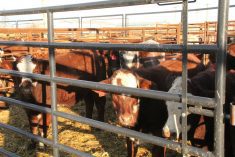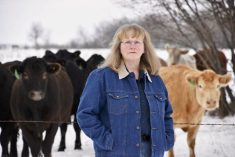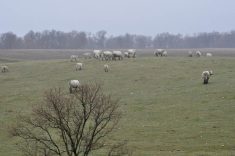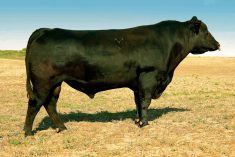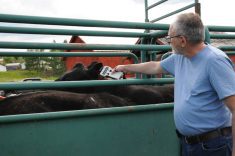Ryan Boyd would rather be searching for newborn calves in waist-high grass than snowdrifts.
The western Manitoba grain and cattle farmer has joined the ranks of producers changing things up on the cattle side of their operations in search of lower operating costs and better environmental stewardship.
He’s found that producing forage-finished cattle requires a strong focus on grazing and production management, forage quality, animal genetics and animal health. But it does pay off.

“There is certainly money to be made if you are able to graze successfully. Our machinery and overhead costs are way down and I find the entire process more enjoyable,” said Boyd, a third-generation farmer. “I calf in the spring and to come out on the quad and see calves on grass that is almost as tall as they are, that’s a bit nicer than when it’s 40 below and having to pull them into a calving barn because the snowbanks are so high.”
Boyd runs 2,000 acres of grain and a 350-head, cow-calf operation. This will be his third year playing with diverse annual forage mixtures to see what fits best into his grazing system. But he has been rotational grazing for more than 10 years and using holistic management techniques for seven.
Read Also
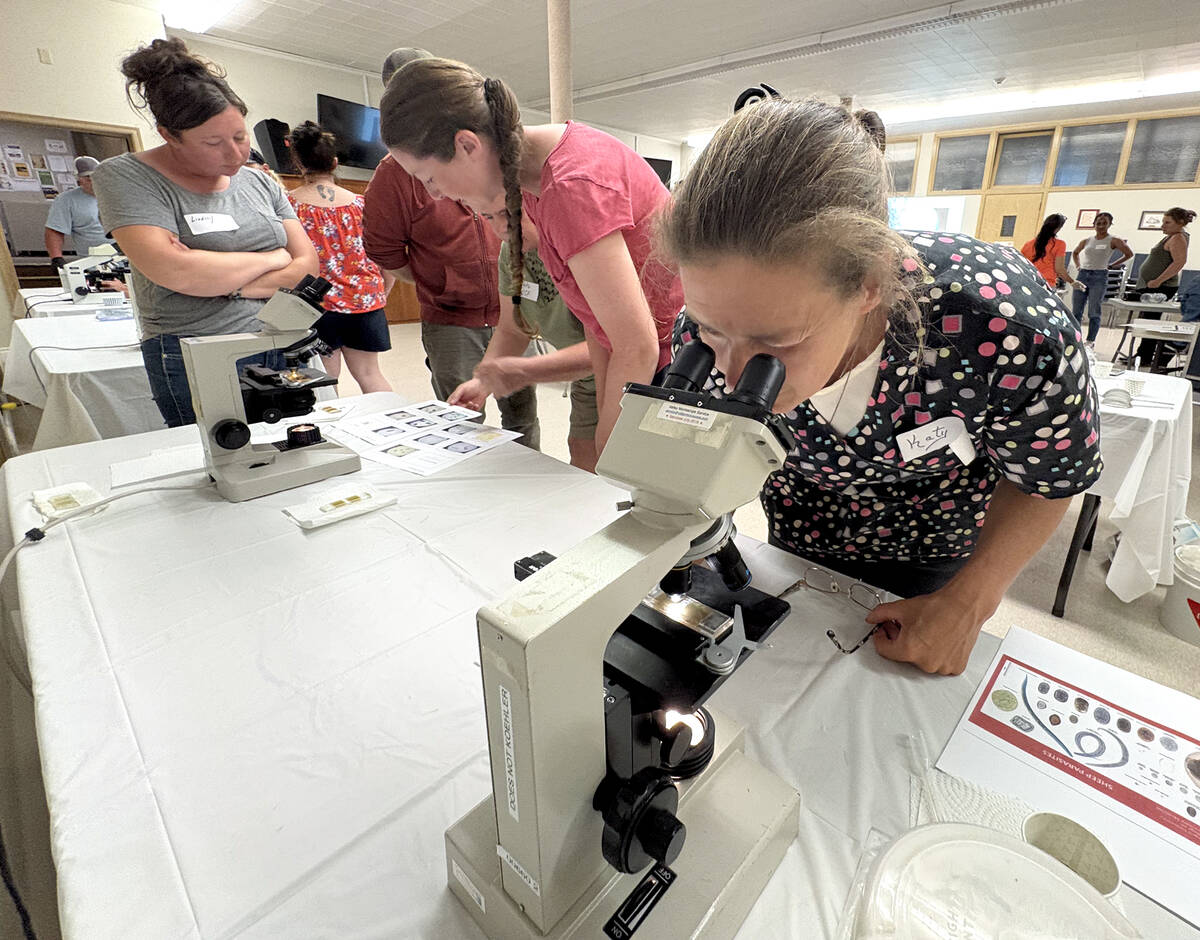
Smart deworming for sheep starts with individual fecal egg counts
Fecal egg count tests are one step to managing dewormer resistance and managing sheep parasites on Canadian sheep farms to maintain flock health.
“After two years of playing with this system, it is clear to me that there is something to this and now we are just looking at fine tuning to see how we can get the most out of it,” said Boyd.
Back to the farm
Boyd grew up on the family farm and went to the University of Manitoba where he acquired a degree in agronomy. In 2006 he returned home where he began to implement a rotational grazing system.
“You can read about these guys doing things all over the world and how great it is, but until you see some results on your own farm, it’s just a nice story. Once you see things working on your operation, it definitely fuels you to keep going,” said Boyd.
Most producers attempting this use perennial pasture mixtures that contain a minimum of 30 per cent legumes, usually alfalfa, along with grass species that are high quality and boast superior regrowth, such as meadow brome, orchardgrass and tall fescue. Many times high-energy annuals are used to supplement lower-quality perennials.
“Don’t underestimate the power of diversity. You don’t have to get too carried away but there is certainly something to having a few different species growing together. This year we’ve got two different mixes. One mix is predominantly a cool season and the plan is to hay it for greenfeed and then it will grow back for grazing,” said Boyd. “The other mix is a summer annual blend and it will just be left standing for a late fall-winter grazing.”
Some producers choose to move cattle intensively, sometimes daily, as short grazing sessions and long recovery periods give plants time to develop abundant root mass and aid to building soil nutrients. Rest and recovery systems are also essential in managing regrowth to ensure first-rate forage.
Subdivided
Most grazing systems consist of eight to 10 permanent paddocks, which are further subdivided with the use of temporary fencing.
“The majority of our paddocks are 10 acres and the cattle will graze on that for about a day or two, depending on the herd size. There is quite a bit of labour involved, just in moving the cattle, but I don’t think as much labour as calving cows in the winter.”
In terms of rest periods, Boyd prefers to leave pastures to rest for 100 to 120 days.
“Ideally we graze the paddock once in the green season and once in the dormant season. It would be grazed in the summer, any time from June to September, and then either early in the spring that year or late in the fall. We aim to graze about 1-1/2 times over the course of the year,” said Boyd.
Boyd is hopeful that this year his cattle will be able to graze on his annual mixture well into December or possibly early January.
“These mixtures will grow three to four feet tall. We have grazed through a foot of snow or more in the past without problem. In December-January we will move into grazing on standing corn and we supplemented a little bit of hay. We strip graze about an acre and move them daily. This is certainly an area where we have cut costs as we have nearly eliminated the need to buy feed,” said Boyd.
Cattle will graze on the corn until spring when they are moved back onto grass pastures.
“The best advice would be to just give it a try. That is how you are going to know what is going to work on your farm. Everyone’s operations are so different, from the time of year they calf to their soil type to the type of weather they get and what their goals are.”
Expanding ideas
Boyd notes that his grazing program does seem to be fairly unique to the area but there are others experimenting with similar systems.
Fellow Brandon-area farmer, Brett McRae has also begun to work with intensive grazing systems.
“Right now I am in the initial years of setting up my intensive grazing system. The cattle are currently grazing on a series of native and non-native grass pasture paddocks and I have been moving them every few days,” said McRae. “So far this year the cattle seem to be gaining well.
“This can definitely be overwhelming when you are starting out and it is a trial-and-error kind of situation, so it is not without fail. But I think in the long run it will have certain benefits,” said McRae.
McRae was selected to participate in the Cattlemen’s Young Leaders mentorship program where he was matched with Steve Kenyon, an Alberta producer who has been involved with sustainable grazing management for more than 10 years.
“Steve and I were matched up really well in terms of what he had to share with me and what I wanted to learn. I certainly learned a tremendous amount from him, not just in his direction but he is also great at pointing me towards other resources that have added to my knowledge on the topic,” said McRae.
Growing up in the livestock industry, McRae has taken a step outside his family’s conventional management methods and is excited to continue with his grazing plan for a few years in order to streamline his procedures.
“Developing a grazing plan is an ongoing thing. You have to try some things out and find out what is going to work best for your farm and your cattle. I have been told to have patience because you usually don’t start to see a lot of the benefits from these management changes for a few years,” said McRae.








